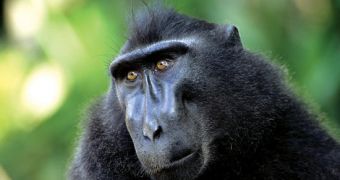This January's issue of the American Journal of Primatology witnessed the publication of a new report stating that Indonesia's critically endangered Sulawesi black macaques are making a comeback.
Thus, conservationists in charge of keeping a close eye on this species maintain that, throughout the past few years, the overall headcount for these animals has been steadily increasing, and that these findings are proof enough that their population is on the rebound.
After carrying out a census of the black macaques living in North Sulawesi's Tangkoko Nature Reserve, conservationists reached the conclusion that the number of such animals per square kilometer upped from just 32.4 in 1999 to 53.8 and 2005 and to 61.5 in 2011, Mongabay reports.
Although it is true that Indonesia's having considerably more Sulawesi black macaques around comes as good news indeed, conservationists want people to not forget that, when compared to historical levels, their population is still low and therefore a cause of worry.
As Randall Kyes, a researcher currently working with the University of Washington puts it, “We've found that the progressive decline has slowed. Somewhere over the last 10 years the trend has started to turn.”
“We're seeing the population in the balance now, but without the sustained efforts by local and international groups working in the reserve and the support and involvement of the local people, the macaques will likely face further decline,” he went on to add.
One need not be a conservationist or a wildlife researcher to figure out the fact that, like many other threatened and endangered species, the Sulawesi black macaques are first and foremost threatened by people's feeling the need to interfere with their existence.
Thus, locals do not shy away from hunting them and eating their meat, and habitat destruction is also a major issue.
“Fifteen years ago it looked like this macaque population would continue its decline and eventually disappear. It doesn't mean that everything is fine now and that we no longer need to worry about the fate of these animals, but it is good news compared with what we've seen over the past 30-plus years in this reserve,” Randall Kyes wished to emphasize.

 14 DAY TRIAL //
14 DAY TRIAL //